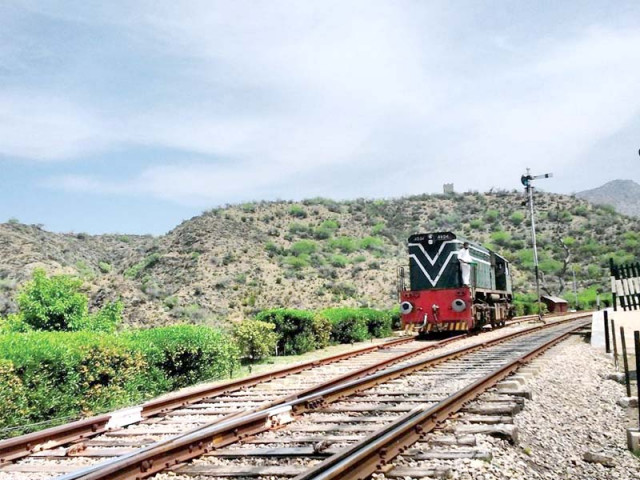$8-billion main rail-link: ML-1 project to be kept outside PSDP
Inclusion would have adversely affected other on-going infrastructure plans, say officials

Inclusion would have adversely affected other on-going infrastructure plans, say officials. PHOTO: HIDAYAT KHAN/EXPRESS
The cost of the project is equal to this year’s federal development programme and its inclusion would adversely affect financing of over a thousand ongoing mega, and medium sized projects, said officials.
China approves $5.5b for Pakistan's main rail link
The government took the decision on Wednesday in a meeting attended by Minister for Railways Khwaja Saad Rafique, Minister for Planning, Development and Reform Ahsan Iqbal and Minister for Finance Ishaq Dar along with their Secretaries concerned.
The exact mode of project implementation will be decided by the Ministry of Finance and Ministry of Railways. The federal government would only provide guarantees for the $8 billion loans that Pakistan will avail from China and the Asian Development Bank to complete the project, said the officials.
There were proposals that the project should either be self-financed by Railways or a special company may be created by the Railways for this purpose. However, Pakistan Railways’ balance sheet is in a shambles, as the commercial entity has been unable to maintain its accounts properly. The Finance Ministry will sort out these issues for smooth execution of the scheme.
The other choices
It was the second such modus operandi the government is adopting to complete mega projects. Earlier, it dropped the $10 billion worth Karachi Nuclear plants from the PSDP aimed at making space for other projects.
The $8 billion ML-I inclusion in PSDP would mean that you do not have space for other mega infrastructure and energy projects, said the officials of the Planning Ministry. They said that Pakistan Railways is already getting Rs40 billion a year and it needs about Rs50 billion to Rs60 billion more per year to complete this mega project.
The total size of fiscal year 2016-17 PSDP is Rs800 billion out of which the development spending allocations are Rs665 billion. Most allocations are made against the mega infrastructure projects. If the government decides to increase the size of the PSDP, it would increase the budget deficit by the same amount, giving negative signals of the fiscal sustainability of the country.
Pakistan Railways asked to adopt state-of-the-art technology
For the current fiscal year, parliament has approved the budget deficit equivalent to 3.8% of GDP.
However, the government had funded Rs390 million feasibility study of the up-gradation project from the PSDP as at that time the plan was to finance the mega project from the federal funding pool.
Finance Ministry’s role
An official handout of the Finance Ministry did not shed light on details of the meeting. It stated that Dar chaired a meeting to review the financing arrangements of the “Up-gradation of the Main-Line-1 (ML 1) of Pakistan Railways” one of the early harvest projects of the CPEC.
China has agreed to provide $5.5 billion in a concessionary loan for the expansion and renovation of the ML-I project, according to the Ministry for Planning. China would extend the loan at an interest rate of less than 2%, said Ahsan Iqbal last month.
After Beijing’s decision to extend the $5.5-billion loan, the total cost of CPEC projects being funded by China either partially or fully will increase to $50.5 billion. Earlier, China had agreed to provide $3.7 billion out of the $45-billion CPEC programme for the ML-I project.
The ADB would provide $2.5 billion to cover the remaining cost of the project to complete Peshawar-Lahore section of the ML-I, said the Planning Minister.
The rail project would be completed in five to six years and after that, the rail speed would double to 180 kilometres per hour. About 75% of the country’s cargo and passenger traffic passes through the Peshawar-Karachi rail track.
Published in The Express Tribune, November 10th, 2016.
Like Business on Facebook, follow @TribuneBiz on Twitter to stay informed and join in the conversation.



















COMMENTS
Comments are moderated and generally will be posted if they are on-topic and not abusive.
For more information, please see our Comments FAQ